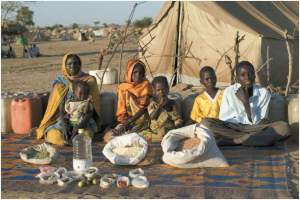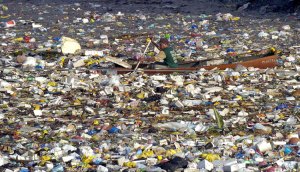Households now contain over 1,000 products (compared to 50, 25 years ago!” (http://ulsd.files.wordpress.com/2011/03/mcmahon-week-8-2011.pdf).
We hear again how low cost energy is the main driving force behind production – both Responsible and Mass Production. In order for production to occur there must be Consumption and consumption is driven by our needs and wants. Without us the consumer there would be no need for products and production. Lecture 1 began with a fact I found to be startling; regular households now contain over 1000 products. I find this totally amazing, it takes a while for me to count to 1000 never mind find 1000 products in my home I ponder. Yet when I begin to think this through I start to grasp the reality of the statement. The kitchen cleaning cupboard alone contains an endless array of products from Fairy Liquid for washing up, to Mr Muscle for every conceivable job and of course Window Shine and the obligatory Air Freshener. So, responsible production and consumption are alien to the world we live in. From the day we are born we require products, the number of products differs according to our social circumstance. We all, no matter where we live or who we are, have the same basic needs but this is not reflected in the way we use and share our resources and it is not reflected in our happiness levels. Strange as it may seem people in the developed world, that’s us, are less happy than people in developing countries!
We in the developed world are exposed to advertisements for products and it seems to me that as the world of advertising has developed so has our want of more and more products. This endless choice and supply of products do not it seems, from research, make us happy. We just believe that the more we have the more we want!
Production on the scale we now know it began back with the Industrial Revolution. Cheap and available fossil fuels, cheap labour and the development of technology fed this production. Not everyone in the world is benefiting from all this choice of products, as these choices and products are only available to those who can afford them! And maybe those of us who can afford the products are not benefiting from having them either if we could take a look into the future. There are still large numbers of people in the world who do not have their most basic human rights met because of our greed and our over use of the earth’s resources.
“Production is the processes and methods employed to transform tangible inputs (raw materials, semi finished goods, or subassemblies) and intangible inputs (ideas, information, knowledge) into goods or services.” http://www.businessdictionary.com/definition/production.html (18-3-11).
As we have seen in previous weeks the actions of people here in the developed world cause consequences for people and for the planet far from us. The fossil fuels that fed this mass production of goods have now started to run out with Peak Oil and goods are becoming more and more expensive. We now need to look at Responsible Production and Consumption before it is too late. We need to look at the consequences of our behaviour and take action. The effects of our behaviour are all too clear to us at the current time with the nuclear fall out in Japan spreading far beyond Japanese shores and having an enormous cost in human suffering. The piles of waste building up in landfills and oceans here in Ireland and all over the world which we know “can release harmful chemicals into the soil and water when dumped, or into the air when burned. It is the source of almost 4% of the world’s greenhouse gases”. http://thegoldenspiral.org/tag/waste/ (12-3-11). Gases which are causing climate change and all the destruction that brings.
The Celtic tiger brought positives and negatives into our lives and we need to face both now. A definite negative, I believe, is that we had so much money and such choice of products that we began to think we needed everything and did not stop to count the cost to ourselves or others. I believe this trend started as a result of having too many products and was fed by the producers and the media and unfortunately governments too. It seems to me that once one company/person discovered or invented a new product someone else had to improve it and create a newer version. This gives us the ripple effect again with a wide variety of choice and the ripples spreading out wide and people having little or no sense of responsibility.
Having a wide variety of choice is good for the consumer but we need to make choices in a responsible and sustainable way. We need to consider the cost of production and balance that with our need for the product. The choice is ours as consumers and we must become more aware of the power we have.
Consider the phases in a plastic water bottle lifestyle:
1. Let’s begin with raw Material Extraction- A common plastic used is Polyethylene Terephthalate. It is produced from oil which is extracted from the ground and is then transported to the refinery. This is not sustainable due to the current worries about the depletion of fossil fuels including oil.
2. Material Processing is next when Chemicals are added to the raw materials to form plastic.
3. Component Manufacturing- The plastic is manufactured by either blow molding or injection molding.
4. The bottle is assembled and Packaged- Labels from paper or plastic are made for each bottle. Paper is a raw material of wood. The bottles are not usually individually packaged but boxed in large quantities for transportation. The labeling and packaging is done in big factories which are powered by energy which is harmful to the planet and in most cases is not a sustainable form of energy.
5. Distribution and Purchase- The water bottles are distributed in bulk usually by trucks run on diesel. The water bottles reach the shops and the consumer and the packaging becomes waste.
6. Installation and Use- The bottle requires no installation and is easy to use.
7. Maintenance and Upgrade- The bottle is usually replaced but it can be recycled numerous times.
8. End of Life- Most bottles are put in the bin and end in the land fill and occasionally are incinerated. Plastic is not biodegradable so it just rots away but not for thousands of years. If the plastic is incinerated chemicals are released into the atmosphere. Plastic bottles can be recyclable but not as easily as glass bottles.
In lectures we consider other ways of doing things. The thing that stood out the most for me was the Gumdrop bin, it was designed for second life. It is the most disgusting option but I believe it works extremely well. It is responsible production provides a solution to an everyday problem. It is tidying up our towns/cities while also allowing for gum to be recycled and made into a new product.
I also was extremely impressed by the idea of ‘Designing for the other 90%’ as the products are helping the developing world. New ideas are developed that are making life better and making water recyclable which leads to sustainability.
It seems to me that we need to try to produce as much as possible locally and we saw an example of this in Cloughjordon. Their local farm produces food for the local community is not overproduced and therefore there is less waste and packaging and food is fresh for consumption. “With climate change, oil depletion, biodiversity loss, and even food security among the potential shocks, it is clear that we are facing a systemic crisis for which we are completely unprepared for. We have now reached the long predicted ‘limits to growth’ and find ourselves facing a convergence of challenges which are inextricably connected. We now urgently need to rethink the way we do things and to design systems and processes from the bottom up, in ways that fit this planets carrying capacity and we need to learn do this together, as communities.” http://www.thevillage.ie/index.php?option=com_content&view=article&id=35&Itemid=7 (20-3-11)
The community of Cloughjordan is setting a model for us all and it looks good too.









Leave a comment